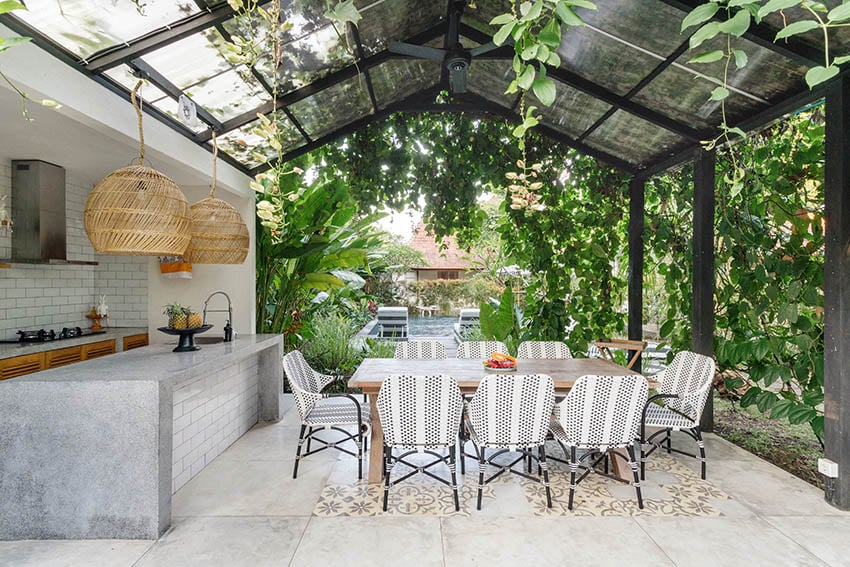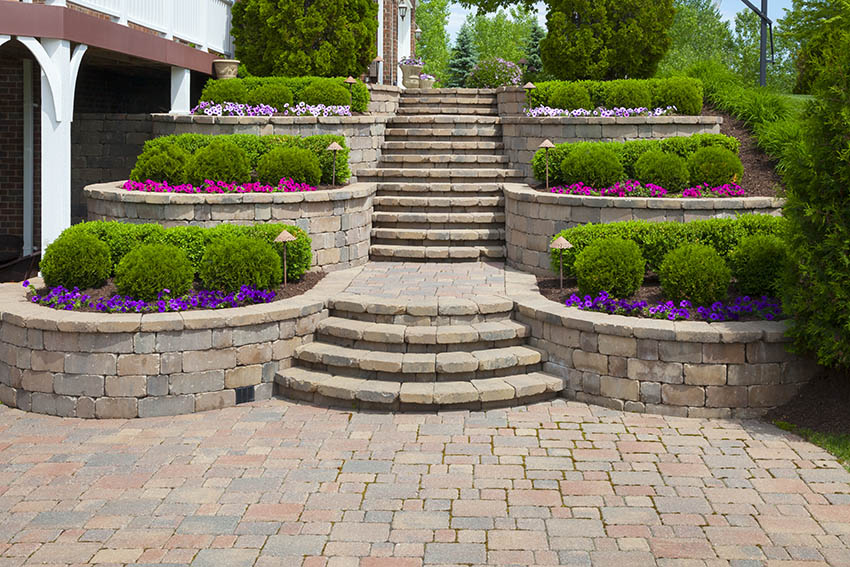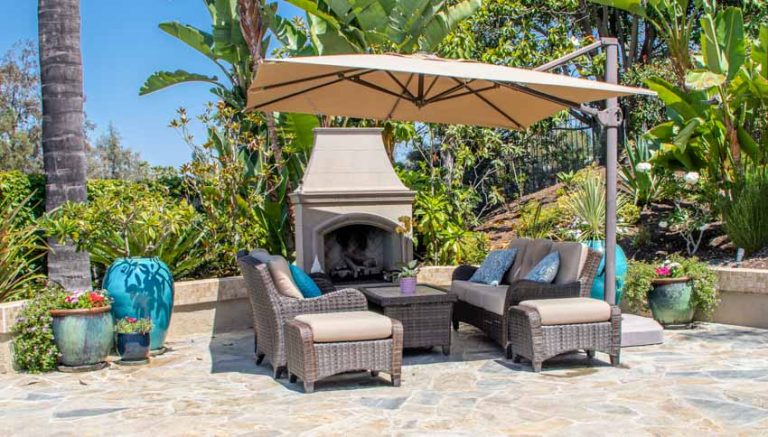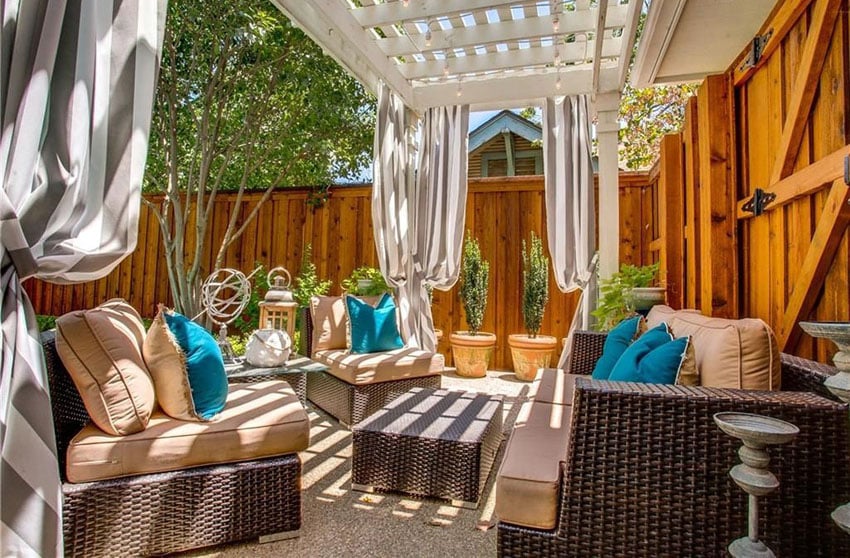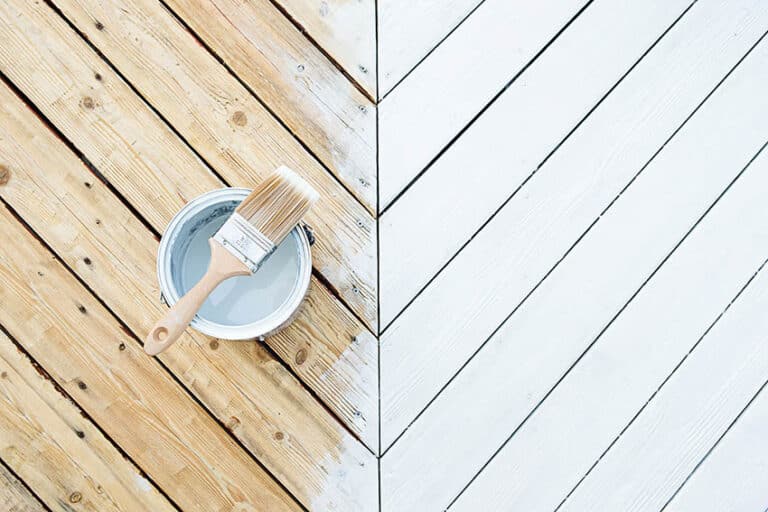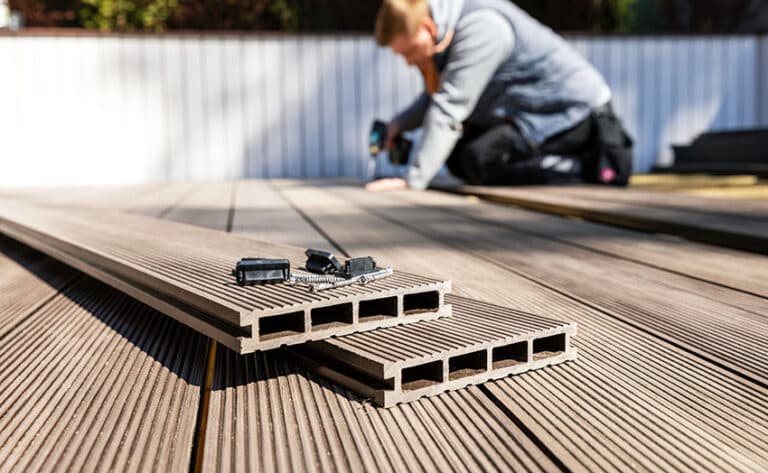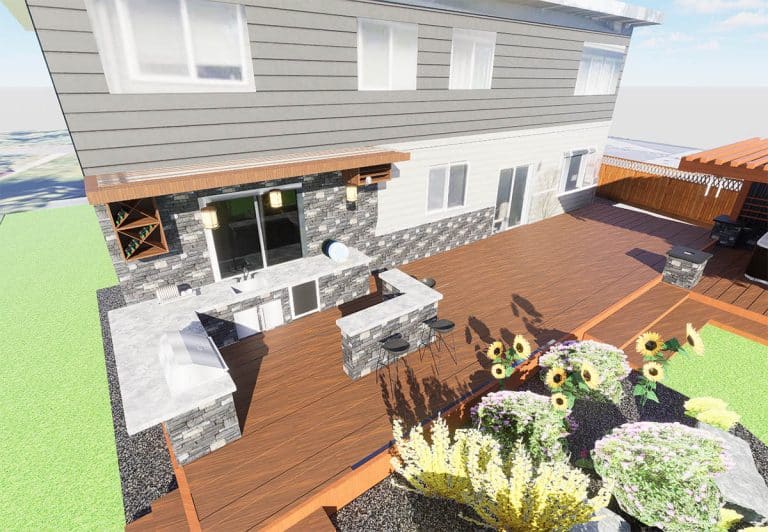Pavers vs Concrete Patio (Pros & Cons & Design Guide)
When confronted with which type of building material to use for your driveway, walkway, or patio, the most popular options are pavers and concrete. Knowing the pros and cons and differences between pavers vs concrete for a patio can help.
Pavers are available in a variety of shapes, styles, patterns, and colors, giving homeowners and designers many different choices to create a unique patio that compliments your home and landscape.
The natural form of concrete is considered cold, drab, and unappealing. Still, a concrete patio can be painted, polished, and finished to resemble other types of building materials, such as natural stone, wood, brick, and tile.
If you plan on renovating or installing a new patio, this guide can help you figure out whether pavers or concrete are the right choice for your outdoor living space.
What is a Paver Patio?
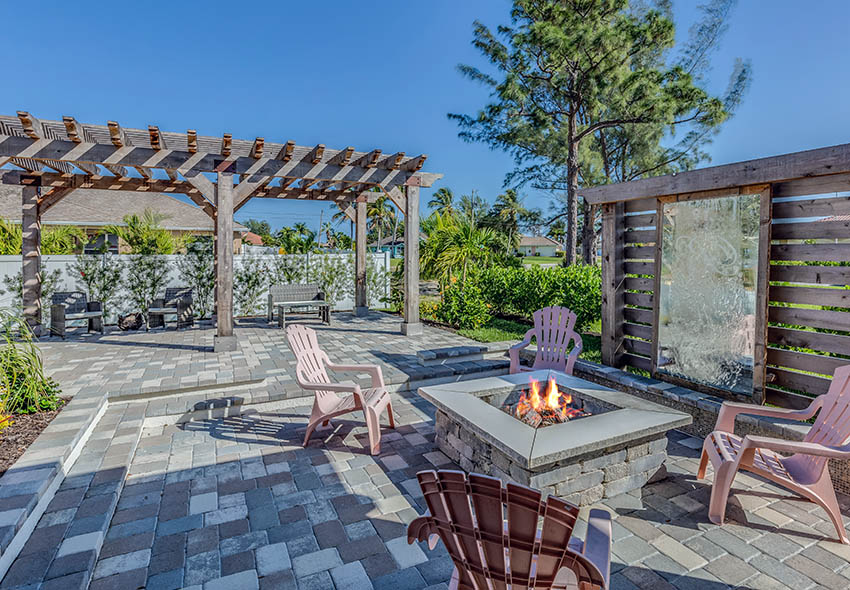
Paving stones or pavers are slabs and blocks made of natural stone such as flagstone, marble, travertine, porcelain, brick (clay), rubber, and even plastic. Pavers are used to create driveways, patios, pool decks, walkways, or pathways, which are used as an alternative to concrete for such projects.
Pavers are made with various colors, textures, and patterns and are usually small pieces of various sizes and shapes. Typically, paver patios are constructed with many pavers with joints filled with sand or poly sand materials, which helps keep the stones in place.
Pavers Pros and Cons
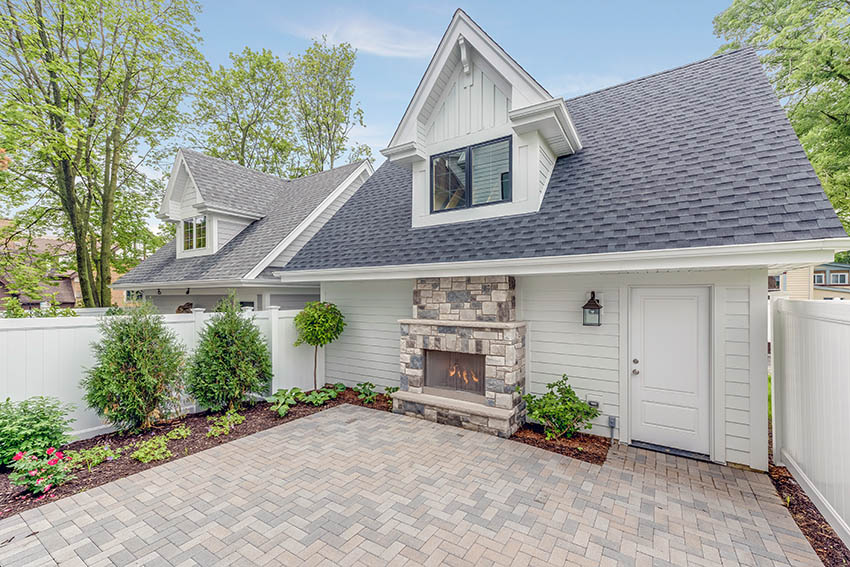
Durability, Strength, and Flexibility
These pavers are installed in an interlocking pattern and create a flexible and strong pavement system. They are not prone to cracking or breaking due to their interlocking joints and can even assist in water drainage. Due to their flexibility when installed properly, paving stones can last more than fifty years.
Pavers are also designed to withstand temperature fluctuations; this is one reason why they are better used in places that have varying climates and seasonal changes.
Maintenance and Repair
Stains on pavers are less noticeable due to the patterns that disguise them; most stains can be cleaned easily with soap and water.
Repairs on a paver are seamless and much easier to do – the simplest way to repair a paver is to crush it with a hammer, break it out of the ground, and replace it with a new one, just like replacing a small piece of a jigsaw puzzle.
Sealers can be applied to protect their surface from environmental wear and tear and to make maintenance and cleaning easier.
Cost Benefits
Due to the benefit of an easy repair and recycle solution that the pavers provide, this process of maintenance and replacement costs significantly less than other types of paving materials, such as concrete.
Versatility and Environmental Responsibility
When it comes to design, there is no end to the paver’s architectural style, shape, and pattern. Since they are made from natural materials, they will not lose any of their color or finish easily.
Pavers also will last for a long period of time, and their color will not be affected by any form of ultraviolet light – which means that using them is a very good investment and helps appreciate the value of your property.
Pavers Cons
Longer Installation
Installing interlocking pavers is harder since it needs more leveling and groundwork and often has custom dimensions to follow. When laid for the first time, they are locked together tightly, but over time, they may begin to loosen and separate from each other.
Higher Upfront Cost
The initial cost of a paver installation may be higher than other options due to the cost of leveling and laying foundations, so pavers are best suited for even ground.
Another cost factor is the building materials and equipment needed to install a paver patio and of course, when you opt for high quality and costly options such as gravel base, decorative capstones and sand between the pieces, the cost may end up with more than 50% upfront investment cost.
Grows Weeds Over Time
Since pavers are built from individual small pieces which form numerous slits between those individual units, which are filled with sand upon installation.
These sands are easily washed out by rains or during regular maintenance washing, thus making it possible for weed seeds to settle down in these slits, and over time, these weeds can take over and can damage the stones in the long run.
What is a Concrete Patio?
In the construction industry, it is the most commonly used structural material used as the foundation for most structures.
Concrete is made of aggregate (usually sand and gravel) mixed and bonded together by cement and water and used in construction through structural concrete, slab construction, stair construction, and other architectural features.
Concrete is also the most popular patio material because of its different decorative finishes and unlimited design potential. Their patios provide a seamless blend between the interior and exterior living space since they are the perfect decorative flooring surface for outdoor entertaining areas such as outdoor kitchens and living rooms, outdoor fireplaces, and water features.
Concrete patios can also be stamped, stenciled, or have engraved patterns that mimic other popular paving materials such as bricks, flagstones, slates, and tiles.
Concrete Patio Pros and Cons
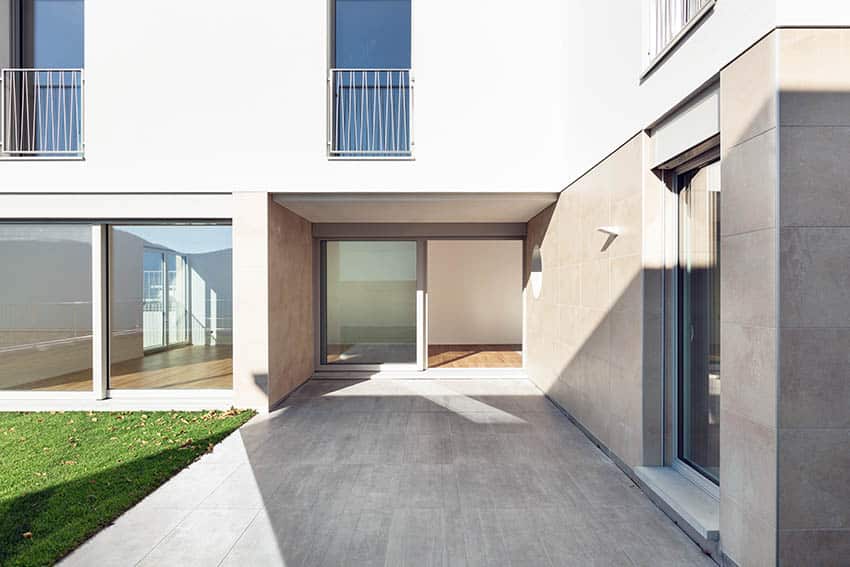
Versatility
The advances in coloring techniques, dyes, and stamping tools have contributed much to the design versatility of concrete patios.
The variety of stains and other coloring methods and options available nowadays make it easy to achieve just about any hue to match or blend with the natural landscape of your house and complement the indoor living space.
There are also a variety of pattern and design options such as stamped patterns, stenciling, engraving, exposed aggregate, and more to create a surface that blends with the interior décor as well as the outdoor landscape.
Durability and Strength
Concrete patios are also highly durable and can withstand extreme weather conditions. The material won’t ever rot, warp, or sink, and it is completely fireproof.
When installed with proper curing, accurate reinforcement, good drainage, and control joints, these factors can prevent the slab from random cracking.
Using a lot of steel and an addition of rebar in a 2-foot grid will make poured concrete highly durable and stronger and will last for decades. These slabs are tough, resistant to impacts, and can withstand up to 2,500 PSI, which forms a strong and solid base for any outdoor activities.
Maintenance
When compared with other masonry paving materials, concrete is easier to maintain because of its solid surface and saves you the labor of staining and resealing yearly.
Concrete is also invulnerable to termite or insect infestation, wood rot, mold, and splintering and won’t harbor weed growth. Simply sweep the surface clean and occasionally wash it down with water using a garden hose.
Value
The initial cost of a typical concrete surface is more affordable due to the lower cost of raw materials and cheaper labor. It can be stamped, engraved, stenciled, or applied to resemble natural stone or brick paver at a fraction of the cost.
Eco-friendly
Using locally produced concrete marks a low environmental footprint since it saves lumber and eliminates the need for regular maintenance using solvent-based wood stains and sealers. This allows you to use recycled materials such as metal fibers or demolished cement.
Concrete Patio Cons
 Safety
Safety
In places with frequent rain or cold winters, the risk of slipping and falling can be heightened by the presence of water or ice on the hard concrete’s surface.
If cracks or chips go unrepaired, it can also pose a serious trip hazard. These qualities make concrete patios dangerous for small children, the elderly, and others prone to falls.
Repairs
In areas where extremely high or low temperatures are being experienced, it can cause a high level of shrinkage and expansion, thus making the concrete prone to cracking and damage.
Repairing of these cracks can be costly and difficult to repair since they may require a major portion of the surface to be demolished and poured again.
If these things happen, matching decorative surfaces after such major repairs can be expensive. Such repair or expansion brings about a possibility that continuity of design and look may be impossible to achieve.
Color Durability
In most cases, the colors of concrete are not integrated throughout the entire slab; instead, the colors are some treatment that are added to the top layer of the slab – and because of this, the colors can wear off or chip off easily.
Strength
Poured concrete has an average of around 3,000 to 4,000 PSI, whereas pavers are typically 8,000 PSI or greater. These patios have low adaptability and are limited to developments; they cannot extend or shrink with ease. This gives lower durability for the cement surface.
Concrete Cost vs Pavers
There are many factors to consider when you compare how much concrete patio costs vs. pavers, such as the surface area you want to cover, materials you need, labor, and removal of previous pavers or concrete.
The average cost for a plain concrete surface is between $2.00 and $5.00 per square foot, and the average is $6.00 and $10.00 for stamped concrete—conversely, interlocking pavers average between $12.00 and $22.00 per square foot.
Concrete Pricing
-
- The average cost for a plain slab is between $2.00 and $5.00 per square foot
- The average cost for decorative or a stamped application is between $6.00 and $10.00 (depending on the design)
- Average custom work (borders, colors, or hand application) costs between $10.00 and $15.00 per square foot
The average cost for a 16 feet by 20 feet concrete patio is between:
- $640 and $1,600 for a basic slab
- $1,920 and $3,200 for a stamped
- $3,200 and $4,800 for a custom project
The repair cost for concrete patios is between $5.00 or can go as high as $300.00, depending on the extent of the damage and the difficulty of the repair.
Interlocking Paver Pricing
-
- Average cost for interlocking paver patios is between $12.00 and $22.00 per square foot
- The average cost for a 16 feet by 20 feet patio made from interlocking pavers is between $3,840 and $7,040
- Repair cost for interlocking paver patio may be as low as $1.00 or can raise up to $75.00 depending on the extent of the damage and the difficulty of the repair.
Paver’s vs Concrete Durability
Whether you install concrete or pavers, you want a durable product that will stand the test of time. Pavers are stronger and last up to 50 years and more; they can support four times as much weight as slabs due to their stronger material and simpler repair process.
Concrete is less than half as dense as pavers, meaning it is more likely to absorb water than displace it. This causes the surface to crack when exposed to extreme temperatures.
Paving stones are less likely to crack due to the aggregate mix and their interlock method. Their high compressive strength and natural density don’t allow water to seep into the surface. But while concrete tends to crack over time, paving stones, on the other hand, can come loose individually.
Pavers’ vs Concrete Maintenance
Both types of patios need regular maintenance, and both concrete and pavers should be sealed regularly to increase durability.
Of the two types of patio material, concrete is easier to maintain since it only needs soap and water to clean; but in time, these patios can still crack and will have stains over time.
Sealants can help prevent cracks and stains, but they must be applied regularly; reapplying sealant repeatedly can make the surface slippery; this can increase lifetime maintenance costs and can affect the color of stamped concrete.
In contrast, pavers’ sealant does not affect the color and can retain their slip-resistance characteristic.
Cleaning paving stones are also simple but not quite as easy as concrete patios because they comprise multiple pieces. Weeds and other plants can grow between them and so, maintaining them can be quite challenging.
Paving Stones vs Concrete Installation
It is always best to hire a professional to build a concrete patio or one made from pavers since they are expert in the field and there are so many steps involved.
Compaction and base preparation are very important factors to consider because small errors can have major repercussions.
Interlocking pavers requires a more intricate installation process. An average patio takes 3 to 5 days to install from start to finish due to the longer construction cycle and process needed for installation. Below is the installation process:
- Excavation
- Grading
- Sub-base compaction
- Geotextile fiber installation
- Base preparation
- Base compaction
- Sand preparation
- Paver laying
- Boarder cutting
- Bond beam preparation
- Stone compaction
- Sealing the surface
However, concrete has a slightly less labor-intensive installation process compared to pavers.
- Excavation
- Grading
- Preparing the foundation
- Setting forms
- Pouring the cement
Afterward, the surface must dry and cure for several days before you can use it.

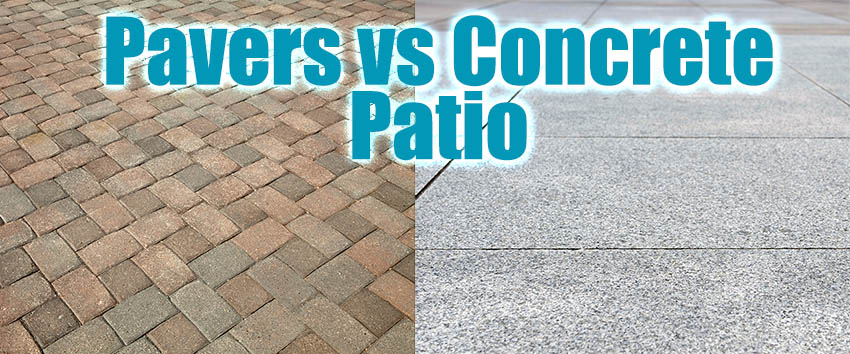
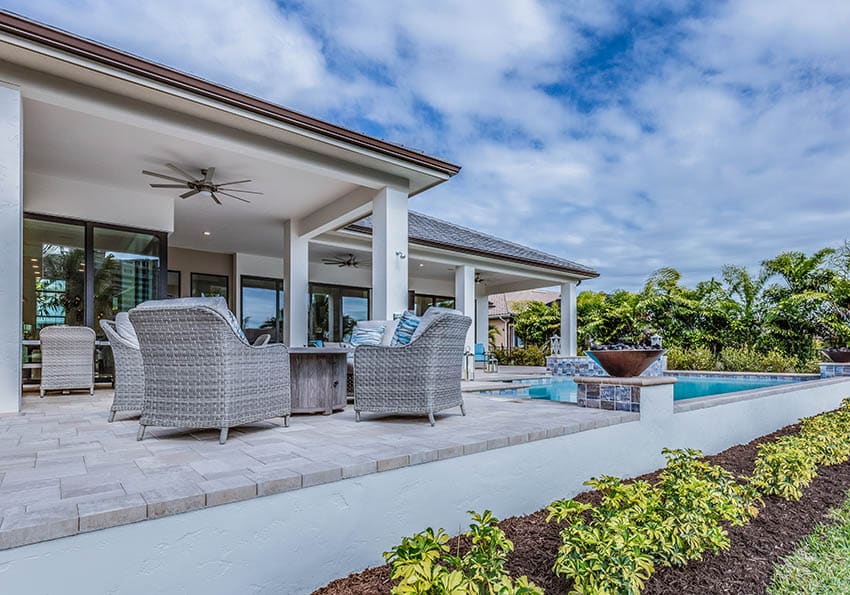
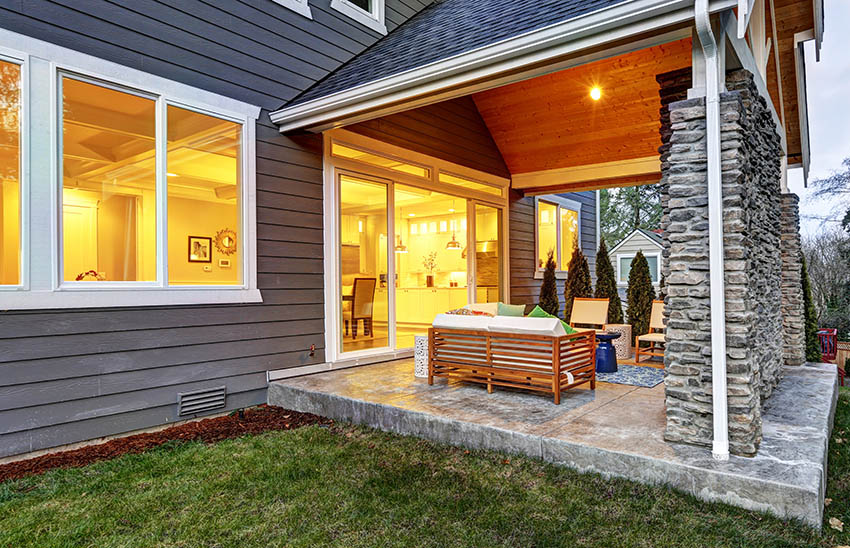
 Safety
Safety